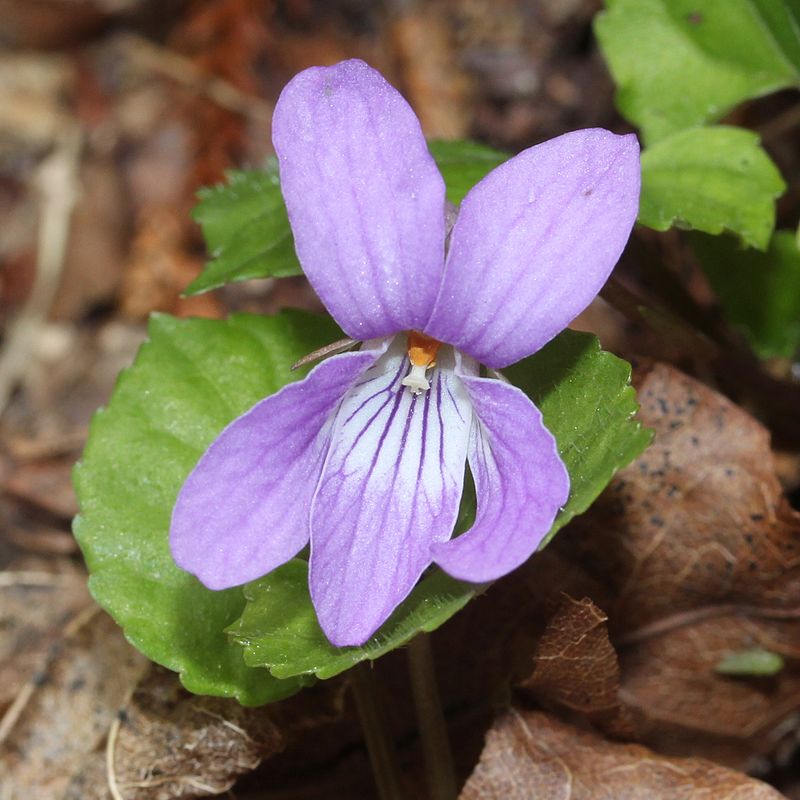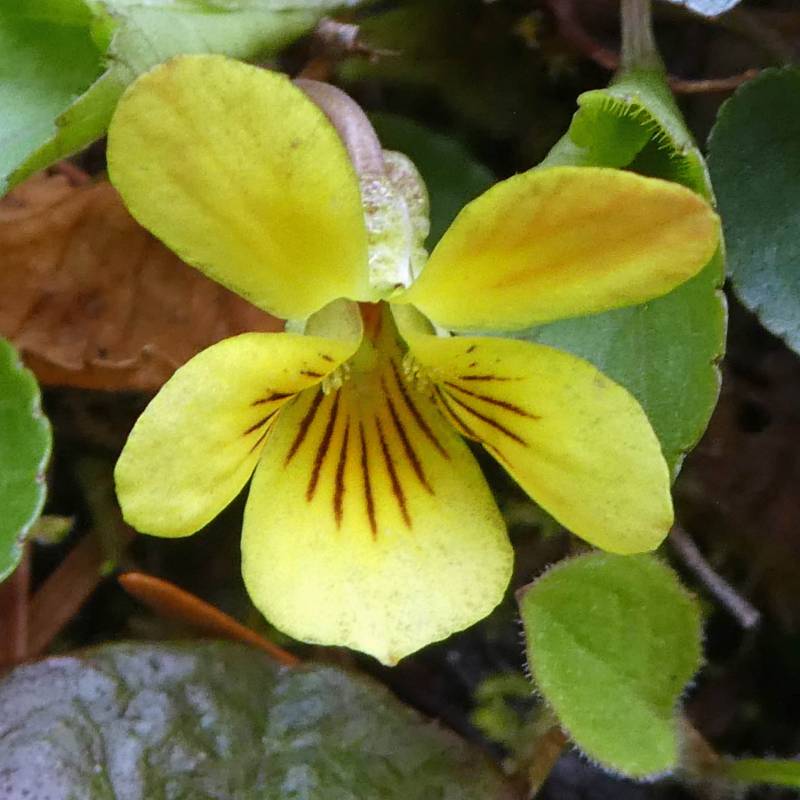Viola selkirkii
Viola sempervirens
great spurred violet, Selkirk's violet
evergreen violet, redwood violet
Leaves blades cordate-lanceolate to cordate-ovate, 1-3 cm. broad, thick and leathery, persisting through the winter;
petioles 2-10 cm. long; herbage spotted with tiny purplish blotches;
stipules brownish, lanceolate, membranous, mostly entire.
Flowers 5-15 mm. long, the spur short, saccate;
peduncles exceeding the leaves;
petals lemon-yellow to gold, the lower 3 purplish-penciled, the lateral pair yellow-bearded;
style head short-bearded.
Fruit a purplish-mottled, 3-valved capsule, ovary superior, placentation parietal, seeds brown.
Viola selkirkii
Viola sempervirens
Occurring east of the Cascades crest in the northeast counties in Washington; Alaska to northesast Washington, east across the northern U.S. and Canada to the Atlantic Coast.
Occurring west of the Cascades crest and east in the Columbia River Gorge in Washington; British Columbia to California.
- Local floras:
BC,
CA,
OR,
WA
- Local Web sites:
CalFlora,
CalPhotos,
Flora NW,
PNW Herbaria,
Turner Photog.
WildflowerSearch
iNaturalist (observations)
USDA Plants Database
- LBJ Wildflower Center
- SEINet
- Plants of the World Online
- Encyclopedia of Life
- Wikipedia
- Google Image Search



